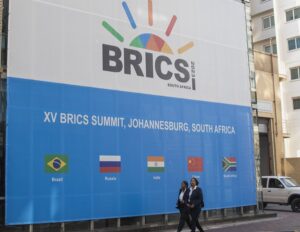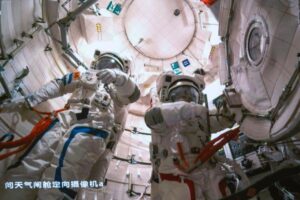
Filipino artist Ryan Villamael chose paper as his medium because he couldn’t afford to paint or sculpt. Today, his paper art is featured at the likes of Art Basel and the Singapore Biennale
In the What Matters To Me series, a Generation T honouree describes what they do, why they do it, and why it matters.
Ryan Villamael makes intensely detailed, fantastical sculptures out of paper—but he only started working in the medium by accident. Since choosing to use paper because of its cheapness and accessibility, he has established himself as one of the Philippines’ leading contemporary artists, and has exhibited extensively around the world, including at the Singapore Biennale, Art Basel Hong Kong and the Biwako Biennale in Japan.
Here, he describes his work in his own words.
I don’t think I really had a choice in my career. This is probably the only thing I can do or want to do. It wasn’t an “if” but a “when” for me. There wasn’t any other option.
I started working with paper cutouts more out of necessity rather than choice. After college, I worked as an assistant for different artists, trying to figure out what I wanted to do. I knew I wanted to paint and sculpt, but I couldn’t afford to work with those expensive media. I ended up with paper because it was what I could afford. I discovered that I could say what I wanted to say and do what I wanted to do with a very simple material. I think we all have a very personal relationship with paper—we played with it as kids, we write on it, we shape it. I realised I didn’t have to paint or sculpt; paper on its own can be expressive.
I’ve stuck with it since then because the medium has so much potential. In the last few months, though, I’ve been experimenting with different materials—metal, mirrors, even sand. We’ll see where that goes. For now, I’m having fun experimenting.
My favourite part of the job is that I’m able to make a living doing what I love. That might sound simple, but in this day and age and this economy, that’s powerful. Coming from where I’m from, it’s a privilege
— Ryan Villamael
In a lot of the countries where I’ve had the privilege of exhibiting, it was really interesting to see how much they had—the institutions, the infrastructure and the funding. Everything was readily available and accessible in terms of production and seeing your ideas materialise. Seeing all of that, of course, you end up wishing [the Philippines] had as much as they do.
At the same time, given the lack of resources here in the Philippines, we learn to be ma-diskarte—or resourceful—to make the most of what we have, to come up with creative solutions in dire situations, to make things work. It’s not ideal but a lot of great work has come from that. The richness of our culture, the diversity, the history—those are things you can’t fabricate, and those are things that make us who we are, in spite of what’s happening in our country.
My favourite part of the job is that I’m able to make a living doing what I love. That might sound simple, but in this day and age and economy, that’s powerful. Coming from where I’m from, it’s a privilege.
In 10 years, I will still be making art. Hopefully, I’ll be working on more ambitious projects, doing more interesting collaborations. In other words, a bigger world of art-making.
Sculptures are three-dimensional works of art created by carving, modeling, welding, casting, or assembling various materials. They can be made from a wide variety of materials, including stone, wood, metal, clay, fabric, glass, and even ice! Here’s a more detailed breakdown:
Characteristics:
- Three-dimensionality: Unlike paintings or drawings, sculptures exist in physical space and can be viewed from all angles.
- Tangibility: You can touch and interact with sculptures in a way that you can’t with other art forms. This adds a new level of sensory experience.
- Variety of materials: As mentioned before, the range of materials used in sculptures is vast, allowing for diverse visual and tactile experiences.
- Expression of ideas and emotions: Sculptures can be representational, depicting real-world objects or people, or abstract, expressing ideas and emotions through form and texture.
Types of sculptures:
- Relief sculptures: These are attached to a surface, projecting outwards in varying degrees of relief. Examples include friezes and bas-reliefs.
- Freestanding sculptures: These are independent works that stand on their own, not attached to any surface.
- Kinetic sculptures: These sculptures move, either mechanically or by wind or other forces.
- Installation sculptures: These sculptures are created for a specific environment and interact with the space in unique ways.
The purpose of sculptures:
- Decoration: Sculptures can be used to decorate interiors, gardens, and public spaces, adding beauty and interest to the environment.
- Commemoration: Sculptures can be used to commemorate historical figures, events, or ideas.
- Expression of ideas and emotions: Sculptures can be used to express the artist’s thoughts, feelings, and perspectives on various topics.
- Religious purposes: Sculptures have been used throughout history in religious contexts, as objects of worship or representations of deities.

